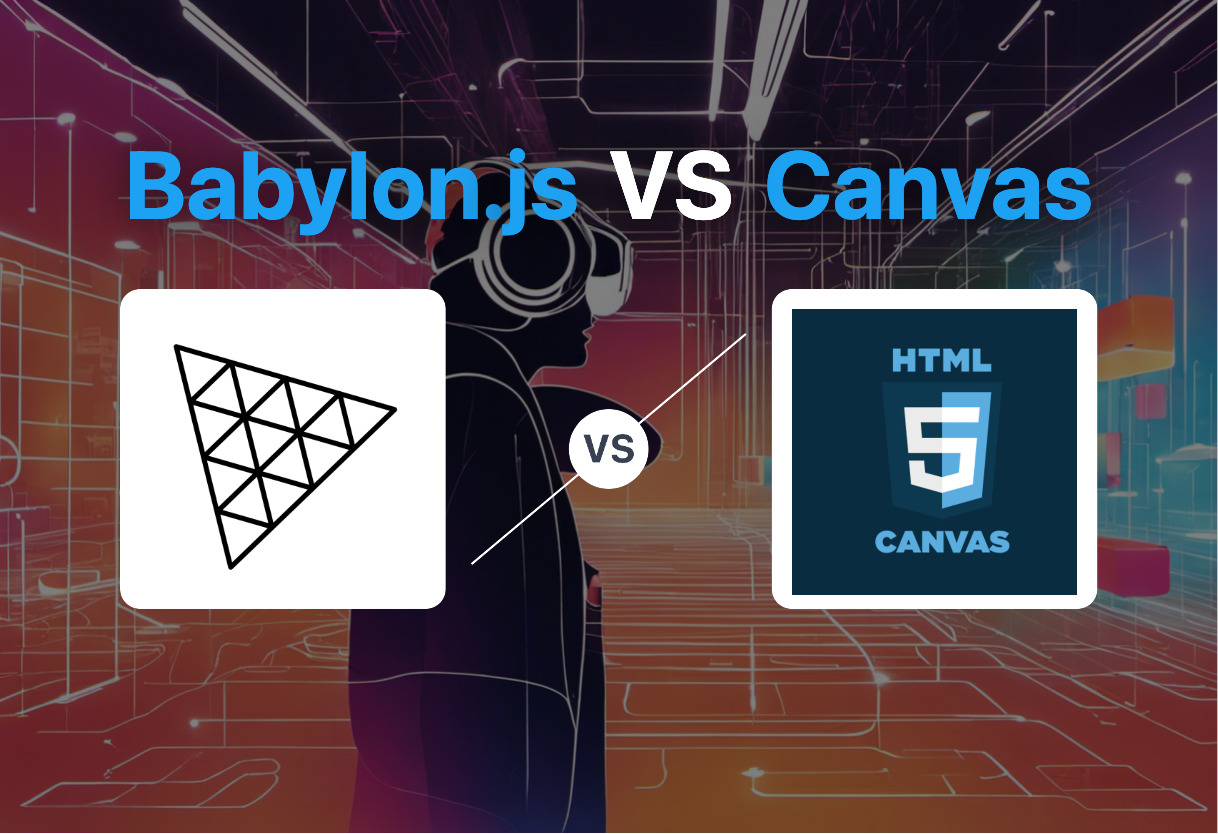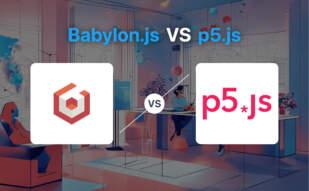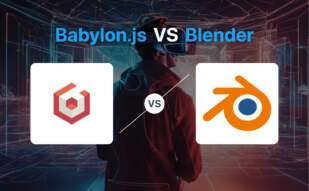For real-time 3D engine needs, Babylon.js is an unparalleled choice. Developed by Microsoft, it delivers robust API access and sophisticated 3D modelling. However, for simpler, on-the-fly graphics creation, the HTML Canvas offers a more flexible toolset, ideal for quick creations and pixel level manipulations.

Key Differences Between Babylon.js and HTML Canvas
- Babylon.js, a real-time 3D engine, offers a detailed API and advanced 3D modeling. Canvas is a lightweight, flexible option for on-the-fly graphics.
- Babylon.js is developed by Microsoft. Canvas is a standard HTML element, supported by all latest browser versions.
- Babylon.js offers physically based rendering for photorealistic images. Canvas offers basic, pixel-level drawing manipulation.
- Babylon.js provides plugin physics engines for real-world physical reactions. Canvas involves simpler drawings, using path features and styles.
| Comparison | Babylon.js | HTML Canvas |
|---|---|---|
| Initial Release | 2013 | Integrated with HTML5 release |
| Main Functionality | Real time 3D engine, ideal for use in web-based virtual worlds and data visualization | On-the-fly graphics such as drawing paths, boxes, circles, text, and images |
| Written in | TypeScript, JavaScript | JavaScript |
| License | Apache License 2.0 | Dependent on browser’s licensing |
| API | Yes – accessible for user projects | Yes – HTML Canvas API used to draw raster graphics or manipulate objects at pixel level |
| Modelling Process | Polygon modeling with triangular faces | Canvas API path features |
| Animation | Key frame animation objects & character animation achieved through skeletons | Basic animations through manipulation of raster graphics |
| Physical Interactions | Plugin physics engines such as Cannon.js and Oimo | No native support for physics simulations |
| Graphics enhancement | Physically based rendering and post-processing methods | Drawing styles and gradients from HTML Canvas API |
What Is Babylon.js and Who’s It For?
Babylon.js is a renowned real-time 3D engine that fuels stunning 3D graphics through HTML5 in web browsers. Conceived by David Catuhe and fathered by Microsoft and other contributors, this engine made its debut in 2013 and has climbed the ladder of popularity ever since. Presently enjoying stable release 5.3.0, Babylon.js is available for public access on GitHub.
Primarily Babylon.js is intended for developers and individuals aiming to create immersive AR/VR content, modellers of historic sites, product designers, and virtual world creators, among others. It also provides valuable tools for sectors such as medicine, the military, and urban planning.

Babylon.js vs Canvas: What’s Your Take?
Both Babylon.js and Canvas offer an impressive range of capabilities, but which reigns supreme? Let’s deliver a verdict.
Developers Focused on Gaming and Animation
For those dealing with game development, interactive animations or simulating intricate physics, Babylon.js emerges as your clear winner. It offers a robust real-time 3D engine, physical rendering and post-processing for photo-realistic imagery, and plug-in physics engines for simulating collisions and real-world reactions. If your goal is creating immersive applications and high-end gaming, Babylon.js is your go-to.

Web Developers and Interactive Content Creators
Canvas is king when it comes to on-the-fly graphics creation, it’s an excellent choice for web developers and designers creating interactive web-based content. If your work involves drawing paths, boxes, circles or text, HTML5 canvas element gets the job done neatly. Plus, you get the freedom to manipulate objects at pixel level.

Simplicity Seekers
If you’re just starting out, or simplicity is your thing, you might be drawn to Canvas. Its house graphics capabilities and direct pixel manipulation make the learning curve relatively less steep and operations more streamlined. However, if you’re ready for a bit of complexity and eye-catching 3D, Babylon.js boasts a rich repository and community support.

Comparatively, Babylon.js stands out for complex 3D modelling and gaming, while Canvas excels for simpler design tasks, like creating interactive web content. Select wisely.
Hannah Stewart
Content writer @ Aircada, tech enthusiast, metaverse explorer, and coffee addict. Weaving stories in digital realms.





